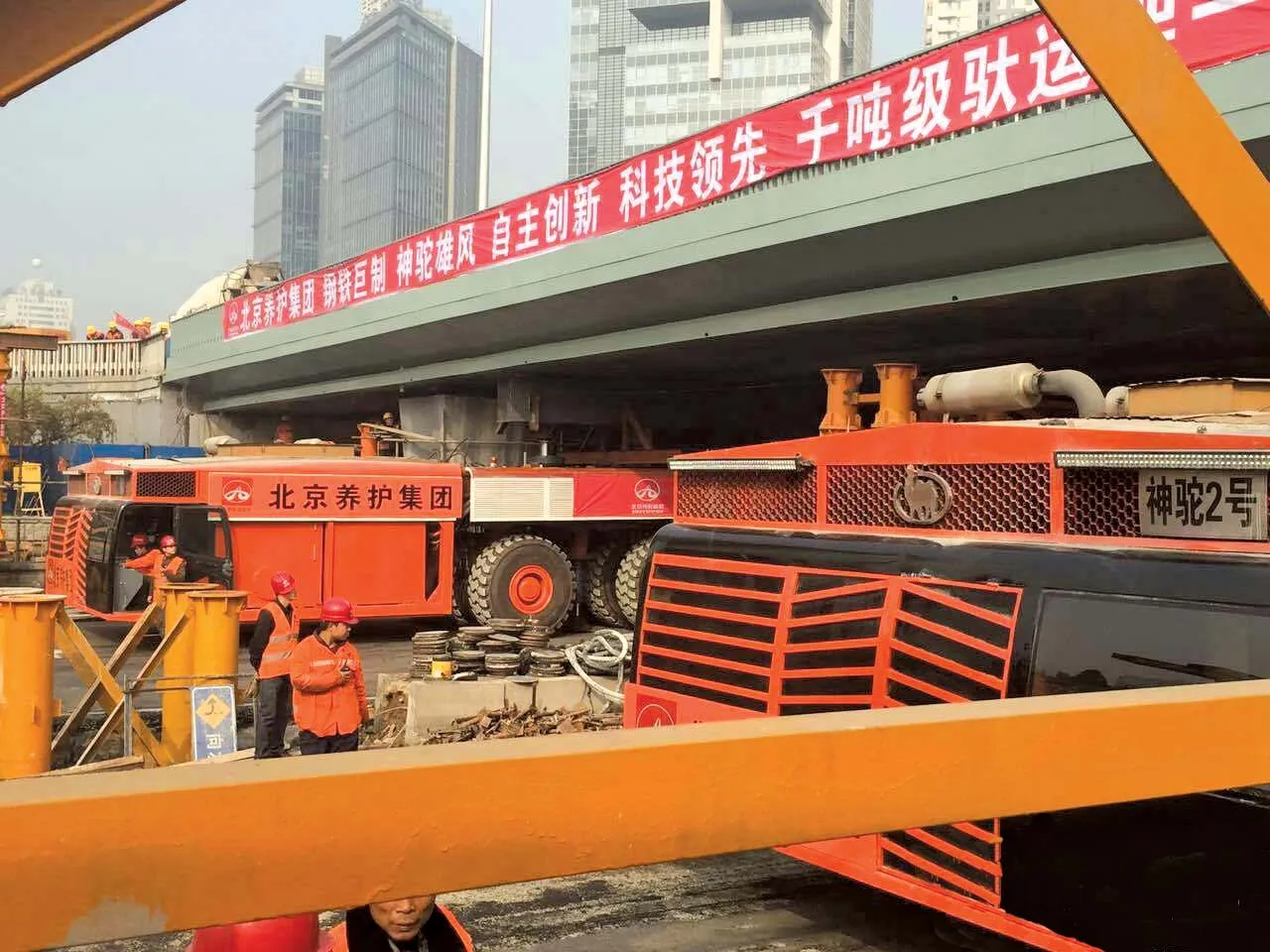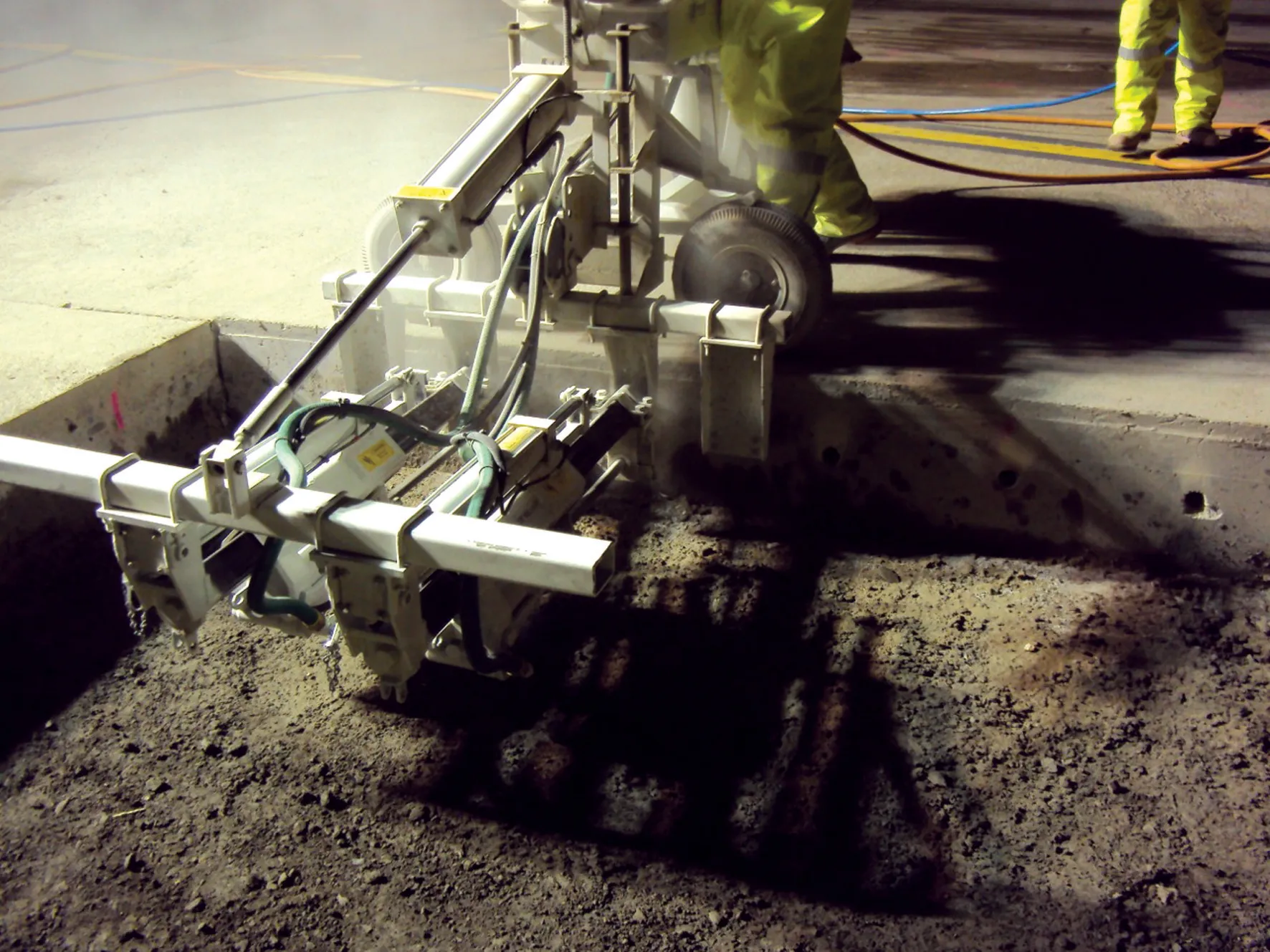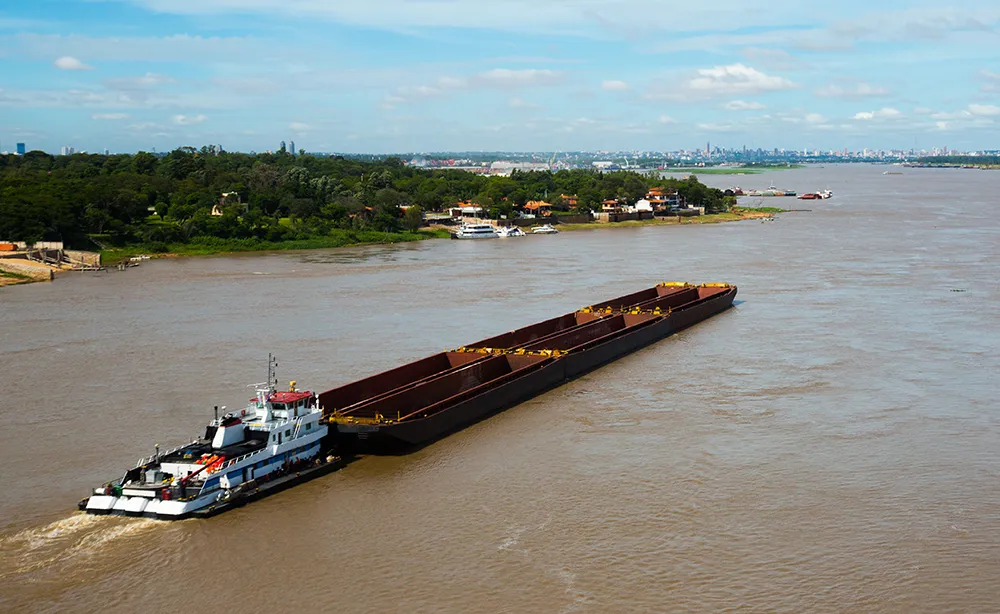The replacement of a very busy road bridge in China’s capital Beijing has been carried out successfully. Due to the volume of traffic using the bridge during week days, the work had to be carried out quickly so as to minimise traffic disruption. But despite being carried out in the centre of Beijing, the replacement work for the Sanyuan Bridge just took 43 hours from start to completion.
March 31, 2016
Read time: 5 mins

The replacement of a very busy road bridge in China’s capital Beijing has been carried out successfully. Due to the volume of traffic using the bridge during weekdays, the work had to be carried out quickly so as to minimise traffic disruption. But despite being carried out in the centre of Beijing, the replacement work for the Sanyuan Bridge just took 43 hours from start to completion.
Built in 1984, the Sanyuan Bridge is located on the Beijing Northeast Third Ring Road and is the overpass bridge connecting Third Ring Road, Jingshun Road and the airport expressway. This is Beijing’s busiest area for traffic. Data from Beijing’s Traffic Management Bureau show that the bridge carries 206,000 vehicles/day, with around 13,000 vehicles/hour at peak periods. There are also 48 bus routes crossing the bridge and these carry around 727,000 passengers/day.
However the existing bridge was no longer able to cope with the enormous traffic demands placed upon it. The city authorities had identified that the bridge structure was wearing out due to the massive engineering stresses it was having to cope with. The bridge clearly had to be replaced, but this provided a huge challenge given the location and the potential disruption the project could cause. With such massive traffic flows using the bridge on a daily basis, any extended project carried out over a period of months using conventional techniques for girder replacement would have resulted in huge jams throughout Beijing. This was not a practical option so instead, a plan was devised for a much faster replacement method that would cause less of a disruption.
At 23:00 on November 13 2015, the girder replacement project for the Sanyuan Bridge commenced. The replacement work was divided into demolition and replacement, with the latter including deck construction and finishing works. After being cut, the girders from the old bridge were carried away using two jack-up machines working together. The new girder was then carried into position using the jack-up equipment, a method allowing for the bridge replacement in the shortest time.
The old girder structure was split into side-span and mid-span sections by the construction team. The former was divided into nine pieces and lifted away by crane while the latter was divided into inner and outer rings and completely carried away. The job requirements called for this process to be carried out within five to six hours.
Due to the loads it carried, the bridge had become V shaped. The highest point in the middle of old girder structure rose by 30cm during the lifting operation, while the lowest point when the two ends were lifted rose by less than 3cm. As the work progressed, cracks appeared in the centre of the mid-span. This was a cause for concern as if the jacking operation was carried out forcibly, there was a risk that the old girder would fracture in the middle, trapping the girder carrier. To deal with the problem, the old girder was dismantled in-situ and carried away in sections.
The old girder was split into 27 pieces for removal. The inner ring is divided into 15 pieces by cutting four times along the bridge direction and twice transversally. The outer ring was cut into 12 pieces by cutting three times along the bridge direction and twice transversally. Each piece had a different weight, with the lightest weighing in at 75tonnes and the heaviest at 139tonnes.
After cutting up the old structure it was in a suspended state and the team had to ensure that the remaining sections would not collapse after moving the first pieces away.
2490 XCMG cranes played an important role, with the team using four large XCMG all-terrain cranes and two large crawler cranes for lifting and transporting the old girder structure in 27 sections.
The new steel girder bridge measures 54.9m long and 44.8m wide and had to be shifted in a single section onto the original pier. This operation had to be carried out with precision and dropped in place to an accuracy of 20mm. Once lowered onto the piers the final position of the new girder bridge could be adjusted slightly as it had to be placed to an accuracy of 9mm.
To carry out the replacement project, two powerful carriers were used, operating in tandem with control managed through a cable connected to the front of each vehicle. The Chinese-made Shen Tuo girder carriers weigh 216tonnes apiece, measuring 50m long by 5m wide, and run on 96t yres. The machines feature a maximum lifting stroke of 1.4m and an overall lifting capacity of 2,200tonnes, with a maximum travel speed of 6m/minute, while the steering design allows the vehicles to achieve 360° turns on the spot.
Because of the need for precision while moving the new bridge section into the desired location, the machines were equipped with an array of positioning tools including Beidou, video and infrared positioning equipment.
At 11:30 on November 15th, the new girder bridge weighing in excess of 1,300tonnes was manoeuvred into the precise location required for the job. Installing the new bridge in this fashion helped minimise the time required for the work. Beijing Municipal Commission of Transport said that the bridge replacement was completed successfully in a single weekend, completely solving the construction period conflict between the bridge replacement and urban traffic. This project is of note as it is the first time the replacement and erection of a large bridge has been carried out in a major traffic node in a major Chinese city. This project was carried out successfully, despite its location in the busiest traffic section in Beijing, and was handled in a very tight timeframe.
Built in 1984, the Sanyuan Bridge is located on the Beijing Northeast Third Ring Road and is the overpass bridge connecting Third Ring Road, Jingshun Road and the airport expressway. This is Beijing’s busiest area for traffic. Data from Beijing’s Traffic Management Bureau show that the bridge carries 206,000 vehicles/day, with around 13,000 vehicles/hour at peak periods. There are also 48 bus routes crossing the bridge and these carry around 727,000 passengers/day.
However the existing bridge was no longer able to cope with the enormous traffic demands placed upon it. The city authorities had identified that the bridge structure was wearing out due to the massive engineering stresses it was having to cope with. The bridge clearly had to be replaced, but this provided a huge challenge given the location and the potential disruption the project could cause. With such massive traffic flows using the bridge on a daily basis, any extended project carried out over a period of months using conventional techniques for girder replacement would have resulted in huge jams throughout Beijing. This was not a practical option so instead, a plan was devised for a much faster replacement method that would cause less of a disruption.
At 23:00 on November 13 2015, the girder replacement project for the Sanyuan Bridge commenced. The replacement work was divided into demolition and replacement, with the latter including deck construction and finishing works. After being cut, the girders from the old bridge were carried away using two jack-up machines working together. The new girder was then carried into position using the jack-up equipment, a method allowing for the bridge replacement in the shortest time.
The old girder structure was split into side-span and mid-span sections by the construction team. The former was divided into nine pieces and lifted away by crane while the latter was divided into inner and outer rings and completely carried away. The job requirements called for this process to be carried out within five to six hours.
Due to the loads it carried, the bridge had become V shaped. The highest point in the middle of old girder structure rose by 30cm during the lifting operation, while the lowest point when the two ends were lifted rose by less than 3cm. As the work progressed, cracks appeared in the centre of the mid-span. This was a cause for concern as if the jacking operation was carried out forcibly, there was a risk that the old girder would fracture in the middle, trapping the girder carrier. To deal with the problem, the old girder was dismantled in-situ and carried away in sections.
The old girder was split into 27 pieces for removal. The inner ring is divided into 15 pieces by cutting four times along the bridge direction and twice transversally. The outer ring was cut into 12 pieces by cutting three times along the bridge direction and twice transversally. Each piece had a different weight, with the lightest weighing in at 75tonnes and the heaviest at 139tonnes.
After cutting up the old structure it was in a suspended state and the team had to ensure that the remaining sections would not collapse after moving the first pieces away.
The new steel girder bridge measures 54.9m long and 44.8m wide and had to be shifted in a single section onto the original pier. This operation had to be carried out with precision and dropped in place to an accuracy of 20mm. Once lowered onto the piers the final position of the new girder bridge could be adjusted slightly as it had to be placed to an accuracy of 9mm.
To carry out the replacement project, two powerful carriers were used, operating in tandem with control managed through a cable connected to the front of each vehicle. The Chinese-made Shen Tuo girder carriers weigh 216tonnes apiece, measuring 50m long by 5m wide, and run on 96t yres. The machines feature a maximum lifting stroke of 1.4m and an overall lifting capacity of 2,200tonnes, with a maximum travel speed of 6m/minute, while the steering design allows the vehicles to achieve 360° turns on the spot.
Because of the need for precision while moving the new bridge section into the desired location, the machines were equipped with an array of positioning tools including Beidou, video and infrared positioning equipment.
At 11:30 on November 15th, the new girder bridge weighing in excess of 1,300tonnes was manoeuvred into the precise location required for the job. Installing the new bridge in this fashion helped minimise the time required for the work. Beijing Municipal Commission of Transport said that the bridge replacement was completed successfully in a single weekend, completely solving the construction period conflict between the bridge replacement and urban traffic. This project is of note as it is the first time the replacement and erection of a large bridge has been carried out in a major traffic node in a major Chinese city. This project was carried out successfully, despite its location in the busiest traffic section in Beijing, and was handled in a very tight timeframe.







